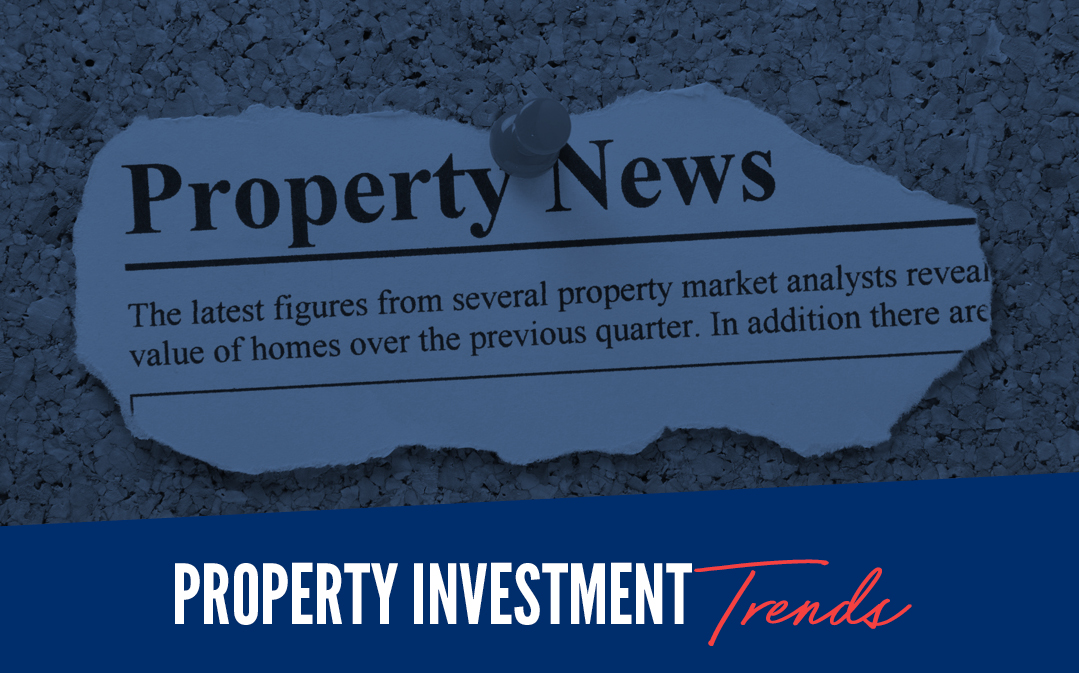Investing this year / Understanding the trends
Understanding property market trends
Thinking of investing this year? Understanding the trends in the property market will help you decide if property investment is a viable wealth building strategy for you right now. In this blog post, the Capital Properties experts will examine current market trends that have the potential to affect your property investment decisions.
The property investment specialists at Capital Properties share the key trends happening in the Australian property market right now. Our FREE Discovery Session will explain how these trends can impact your property investment decisions and help you work out if investing this year is the right move for you.
On the go? Here’s 30 seconds of take outs:
- Understanding the trends in the property market is vital for successful property investment.
- Capital cities had a record-breaking annual rental increase of 11.7%.
- Rental demand is driven by migrants, short-term visa holders & foreign students.
- Australia’s population will increase by 900,000 by 2025 stimulating further demand.
- Construction is under pressure – accounting for almost 1 in 3 insolvencies over the past year.
- Home values are trending higher – up by 0.9% since early March.
Keep reading >>
2023 – a landlord’s market
So far in 2023, Australian landlords have enjoyed historically high rental prices across most capital and regional areas. Post-pandemic house rents have risen for eighth consecutive quarters by 31.4% which equates to $135 a week. While unit rents have increased by 34.1%, or $140 a week. In total, the combined capitals enjoyed a record-breaking annual rental increase of 11.7% in the past year, mostly driven by increasing demand for capital city units.
And apart from Canberra and Hobart, capital city vacancy rates are still near record lows causing a rental crisis in some areas. We discussed this before in the blog post “Housing affordability/ rental crisis/ extremely low vacancies. What does it all mean?”
What’s driving high rental demand?
As a property investor, understanding the trends of the rental market is vital. Right now, rental demand is being driven mostly by migrants, short-term visa holders and foreign students, who generally search for more affordable accommodation in medium to high density housing, with easy access to amenities.
In the 12 months from September 2021 to 2022, Australia welcomed almost 304,000 new migrants. And the pressure on the rental market is predicted to continue with a projected 650,000 migrants arriving in Australia over the next two financial years. If you also consider births, it’s expected that Australia’s population will increase by 900,000 by 2025.
This high rental demand is obviously great news for investors as it usually means higher rental income. However, rental income isn’t the only reason that investors consider property investment. Even when high interest rates mean that the operational costs of managing the property could exceed rental income for a period, there’s always the obvious benefits of capital gains and negative gearing. As Eliza Owen, Head of Residential Research at Corelogic says; “Negative gearing exists to help investors purchase real estate and provide rental housing when operational costs of the property exceed rental income.”
High rental demand = more demand for property
The rental market has been under significant pressure for some time in Australia. And as rental demands increase over the rest of this year, the need for available properties will obviously continue to grow. Lower stock levels are also likely to place upwards pressure on home prices, according to CoreLogic research director Tim Lawless. “With rental markets this tight, it’s likely we are seeing some spill over from renting into purchasing, although, with mortgage rates so high, not everyone who wants to buy will be able to qualify for a loan.” says Lawless.
With growing pressure in city markets, it’s expected that rents will continue to increase, meaning that many people will consider purchasing in surrounding satellite areas and suburbs, creating further demand for improved infrastructure and new housing.
The effect of inflation and interest rates on housing
If you’re not sure of the correlation between inflation and interest rates, then it’s worth having a quick skim of our post “What is the relationship between inflation and interest rates?”.
Although inflation peaked in the December quarter 2022, the most recent rate hike [May 3rd 2023] demonstrates that the Royal Bank of Australia (RBA) is concerned that at 7%, it’s still too high. So, it’s no surprise that many Aussies are being financially cautious, having endured the most rapid rate hiking cycle on record.
The RBA notes that reduced household spending is due to “a combination of higher interest rates, cost of living pressures and the earlier decline in housing prices” – despite data showing a recent more positive housing trend.
Most economists agree that this rate hiking cycle is nearly over with the RBA expecting to reach its goal of 3% by mid-2025. In fact, recent figures show an improved confidence in the property market with stronger demand for housing. CoreLogic noted in mid-April that home values are starting to trend higher, lifting by 0.9% since early March.
Pressure on construction
The construction industry has also felt the effects of inflation. High inflation means higher material and labour costs. Coupled with delays caused by supply chain disruptions and weather events, builders have been left with impossibly slim margins. And there are less buyers as new homebuyers struggle to negotiate these higher construction costs as well as rising interest rates. Inevitably, this situation has led to an unfortunate increase in insolvencies in the construction industry.
The Australian Securities and Investments Commission (ASIC) reports that over 400 construction companies have liquidated since the start of 2023 with almost 1,500 insolvencies since July 2022. The RBA’s financial stability review estimates that the construction sector made up approximately 30% (I in 3) of all company insolvencies over the past year.
House prices stabilising
CoreLogic’s report on 30th April 2023 showed that each of the four largest capitals had a lift in values with the second consecutive monthly rise in national housing values. This demonstrates an improvement in consumer confidence and is presumably in response to the factors mentioned earlier – increased demand due to migration, tight rental conditions, and low available supply. All of which show no sign of easing anytime soon.
Some property investors who sat on the sidelines through the downturn are assuming that the market has bottomed out and are all set for investing this year. It’s certain at least that the market will level out when interest rates have finally peaked and improved consumer confidence will drive both purchasing and selling activity in the property market.
Should you consider investing this year?
As a Defence Force member you might be wondering if it’s worth investing in property this year as part of your wealth-building strategy? At Capital Properties, we recognise that property investment is a long-term strategy, so although understanding the trends is vital for well-informed investment, short-term circumstances shouldn’t deter you from making smart investment decisions.
Ultimately, the decision about whether it’s worth investing this year comes down to whether YOU are ready or not. Even in more challenging markets, there are opportunities and incentives for ADF members to take advantage of. And in some cases, it’s better to act sooner rather than later and risk missing out on a great investment property. Our blog post “Buying a house while in the Defence Force” explains some of these ADF incentives.
If this is your first time in the market, then we recommend you check out our “Defence force first home buyer’s guide.”
At Capital Properties, we work with ADF members to maximise your chances of success. It’s our mission to help you identify the best markets to invest in and find properties that deliver great rental yields with potential for capital growth, and the ability to weather changes in the market and economic downturns.
The Capital Properties free Discovery Session will guide you with everything you need to know on how to buy well for effective property investment.
Check out our FREE investor tools: Sign Up to Our Switched-on Property Investors Program | Your free online property investment toolkit






